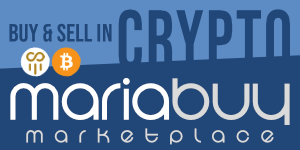- Joined
- Oct 12, 2005
- Messages
- 93
- Reaction score
- 0
Domain name marketplaces charge 12-15 percent commission on the sale price. The commission can be paid by the buyer, seller, or divided between them.
At a first glance, this might seem high compared to something like the 6 percent real estate commission. Below I will provide arguments as to why a higher commission rate for domain names is justifiable.
In their recent bestselling book[1], Levitt and Dubner point out that the 6 percent commission does not give a buyerâs real estate agent an incentive to secure the best price for the client. They point out that for a sale of a $300,000 property, the commission to the sellerâs agent is only 1.5 percent, yielding a $4,500 commission. However, they point out that if the house is sold for an additional $10,000, the seller receives a net additional amount of $9,400, while the agent only receives an additional fee of $150. The agentâs commission, they point out, is not enough of an incentive for the sellerâs agent to go the extra mile to secure the property at, say, an additional $10,000. Hence, the agent would not work in the best interest of the owner. Moreover, Levitt and Dubner point out that an agentsâ personal property is sold, on average, at 3 percent higher than a clientâs and that the agentâs property is kept on the market for 10 days longer.
Unlike the real estate market, in which property that is similar to other properties on the market frequently changes hands, works of art and domain names are unique or nearly unique and are infrequently traded. These two major characteristics contribute to higher commissions in both the art market and the domain name market. In the art market, for example, Ashenfelter and Graddy[2] report that an average commission, called the âbuyerâs premium,â paid by the buyer is 10 percent to 17.5 percent of the sale price â called the âhammer priceâ - but is lower for large purchases. Thus, a winning buyer pays the hammer price and the buyerâs premium. Sellers also pay a negotiated commission of 10 percent of the hammer price. In some cases sellers pay no commission. As with domain name marketplaces, art markets provide a wider range of services than real estate agents.
Like in the art market, domain name commission is justifiably higher than a real estate agentâs so as to provide an incentive to the agent to go the extra mile. Moreover, domain name marketplaces, besides providing an exchange mechanism, they provide additional services including bringing in the other side of a transaction to the negotiation table, qualifying buyers and sellers, and participating in negotiations, escrow, title transfer, and appraisals.
------------------
[1] Steven D. Levitt And Stephen J. Dubner (2005), Freakonomics: A Rogue Economist Explores the Hidden Side of Everything, Harper Collins, pp.7-9.
[2] Orley Ashenfelter and Karthryn Draddy, âAuctions and the Price of Art,â Journal of Economic Literature, XLI, September 2003, p. 765.
Alex Tajirian
At a first glance, this might seem high compared to something like the 6 percent real estate commission. Below I will provide arguments as to why a higher commission rate for domain names is justifiable.
In their recent bestselling book[1], Levitt and Dubner point out that the 6 percent commission does not give a buyerâs real estate agent an incentive to secure the best price for the client. They point out that for a sale of a $300,000 property, the commission to the sellerâs agent is only 1.5 percent, yielding a $4,500 commission. However, they point out that if the house is sold for an additional $10,000, the seller receives a net additional amount of $9,400, while the agent only receives an additional fee of $150. The agentâs commission, they point out, is not enough of an incentive for the sellerâs agent to go the extra mile to secure the property at, say, an additional $10,000. Hence, the agent would not work in the best interest of the owner. Moreover, Levitt and Dubner point out that an agentsâ personal property is sold, on average, at 3 percent higher than a clientâs and that the agentâs property is kept on the market for 10 days longer.
Unlike the real estate market, in which property that is similar to other properties on the market frequently changes hands, works of art and domain names are unique or nearly unique and are infrequently traded. These two major characteristics contribute to higher commissions in both the art market and the domain name market. In the art market, for example, Ashenfelter and Graddy[2] report that an average commission, called the âbuyerâs premium,â paid by the buyer is 10 percent to 17.5 percent of the sale price â called the âhammer priceâ - but is lower for large purchases. Thus, a winning buyer pays the hammer price and the buyerâs premium. Sellers also pay a negotiated commission of 10 percent of the hammer price. In some cases sellers pay no commission. As with domain name marketplaces, art markets provide a wider range of services than real estate agents.
Like in the art market, domain name commission is justifiably higher than a real estate agentâs so as to provide an incentive to the agent to go the extra mile. Moreover, domain name marketplaces, besides providing an exchange mechanism, they provide additional services including bringing in the other side of a transaction to the negotiation table, qualifying buyers and sellers, and participating in negotiations, escrow, title transfer, and appraisals.
------------------
[1] Steven D. Levitt And Stephen J. Dubner (2005), Freakonomics: A Rogue Economist Explores the Hidden Side of Everything, Harper Collins, pp.7-9.
[2] Orley Ashenfelter and Karthryn Draddy, âAuctions and the Price of Art,â Journal of Economic Literature, XLI, September 2003, p. 765.
Alex Tajirian








